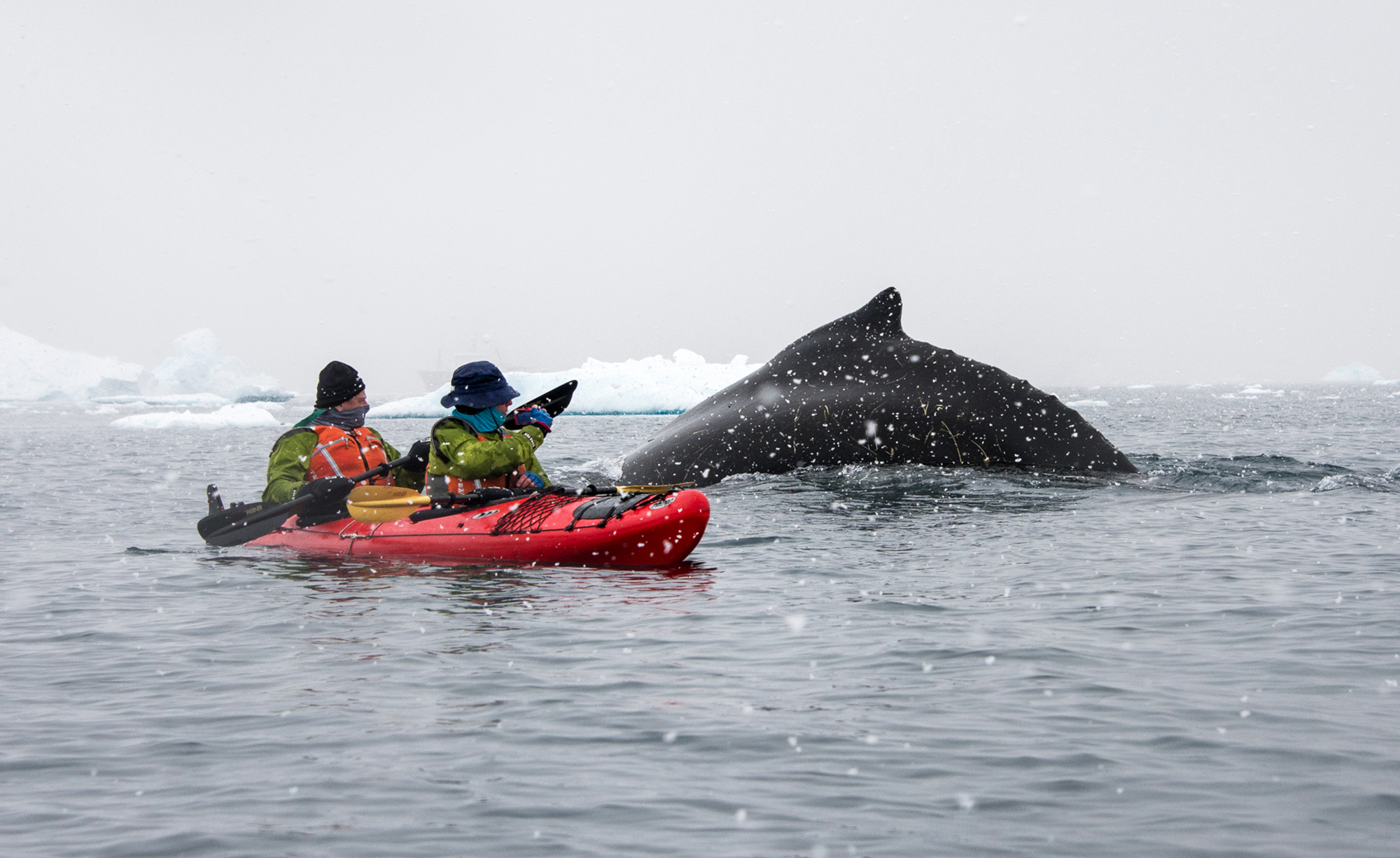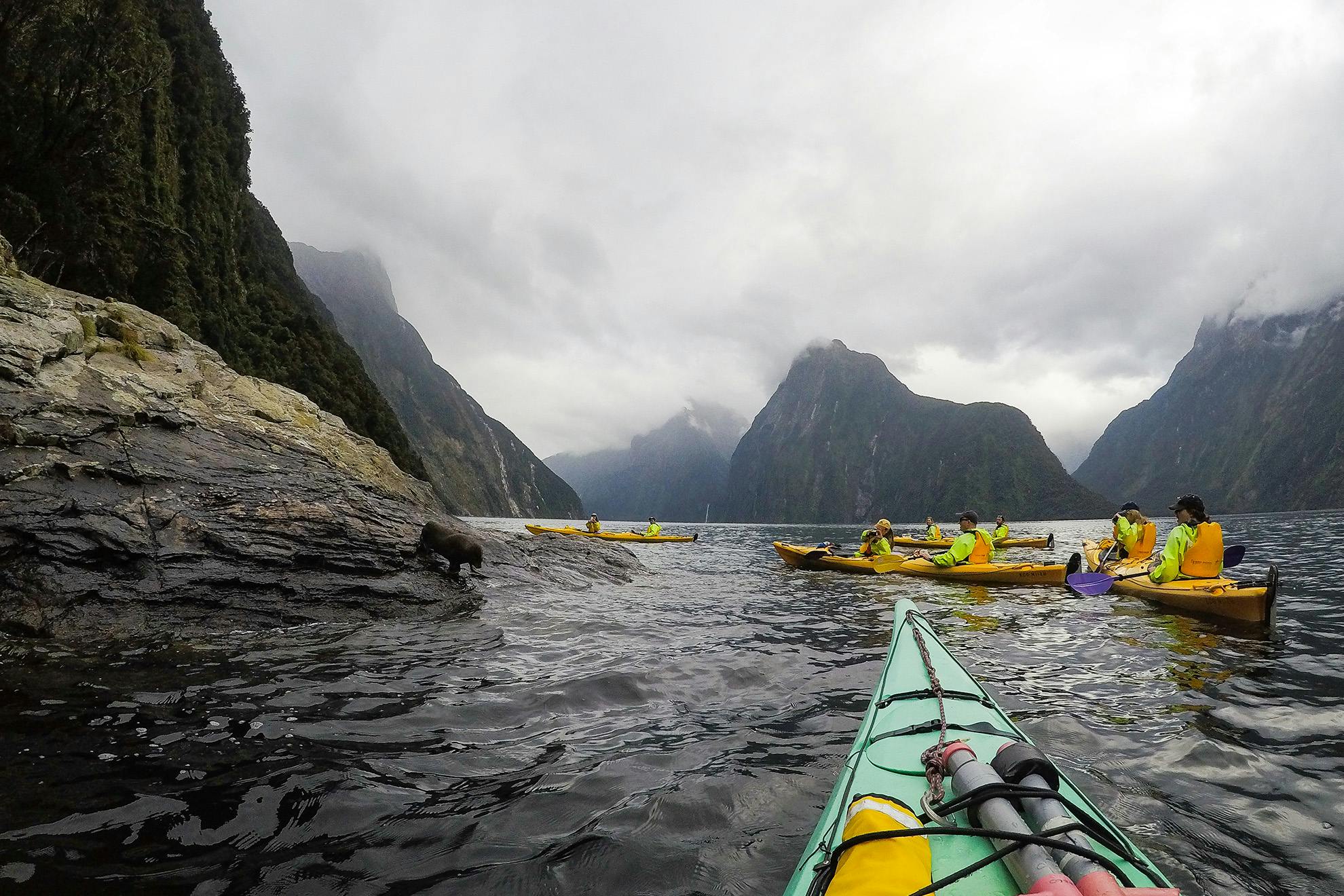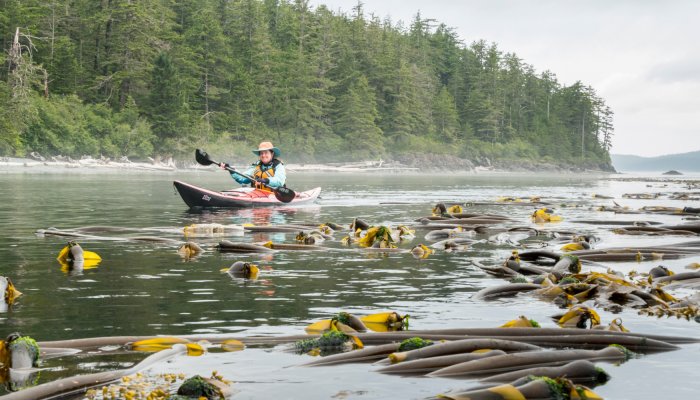Kayak wildlife encounters offer an exhilarating opportunity to get up close and personal with nature’s marvels. Paddle your way through serene waters as you witness an array of fascinating creatures in their natural habitats.
From playful dolphins to majestic sea turtles, and from graceful swans to colorful birds, kayak wildlife encounters provide a unique and immersive experience for nature enthusiasts. Immerse yourself in the sights and sounds of the wilderness as you navigate through winding rivers, tranquil lakes, and coastal mangroves.
With the gentle strokes of your paddle, you can explore hidden coves, observe elusive wildlife, and create memories that will last a lifetime. So, hop on a kayak and embark on a thrilling adventure that will connect you with the wonders of the wild.

Credit: www.australiangeographic.com.au
Preparing For A Kayaking Adventure
Embarking on a kayaking adventure is a thrilling way to explore the great outdoors and get up close and personal with nature’s most fascinating creatures. If you’re planning to encounter wildlife while kayaking, it’s important to be well-prepared. In this guide, we’ll discuss the key steps to take before setting out on your unforgettable journey.
Choosing The Right Kayak
The first step in preparing for a kayak wildlife encounter is to choose the right kayak. Selecting a kayak that suits your needs and experience level is crucial for a safe and enjoyable adventure. Consider the following factors when making your decision:
- The type of water you’ll be kayaking in – whether it’s flatwater, open ocean, or whitewater – will determine the style of kayak you need.
- Consider the length and width of the kayak, as it affects its stability and maneuverability. Longer kayaks are typically faster and more efficient, while shorter ones provide better maneuverability.
- Check the weight capacity of the kayak to ensure it can accommodate both you and any additional gear or equipment you plan to bring along.
Essential Safety Gear
Prioritizing safety is paramount when venturing into the wild. Equipping yourself with the right safety gear can give you peace of mind and help prevent any mishaps. Here’s a list of the essential safety gear you should have on hand:
| Essential Safety Gear |
|---|
| Personal flotation device (PFD) – Make sure it fits properly and is approved for kayaking activities. |
| Whistle or signaling device – It can be used to attract attention if needed. |
| Spray skirt – Essential for keeping water out of your kayak and helping you stay dry. |
| Bilge pump or sponge – These tools can assist in removing water from your kayak. |
| Paddle float – It helps you re-enter the kayak in case of a capsize. |
| Towline – Useful for towing or being towed in case of an emergency. |
Researching Wildlife Hotspots
Researching wildlife hotspots is an essential step in maximizing your chances of encountering fascinating creatures during your kayaking adventure. To find the best spots, consider the following:
- Explore online forums and websites dedicated to kayaking and wildlife enthusiasts. These platforms often provide valuable insights and recommendations.
- Consult local guides and experts who have extensive knowledge of the area you’ll be kayaking in.
- Keep track of migration patterns and seasonal changes that may influence wildlife activity.
- Take into account the time of day when certain wildlife species are most active.
By choosing the right kayak, equipping yourself with essential safety gear, and researching wildlife hotspots, you’ll set the stage for an incredible kayaking adventure filled with unforgettable wildlife encounters. So go ahead, immerse yourself in nature, and create memories that will last a lifetime.

Credit: www.wildernessmag.co.nz
Understanding Wildlife Behavior
Discover the secrets of wildlife behavior during exhilarating kayak wildlife encounters. Gain a unique understanding of how animals interact in their natural habitats, providing an unforgettable experience.
Identifying Common Species
When embarking on a kayak wildlife encounter, it is essential to be able to identify the common species you may come across. Whether it’s soaring eagles, playful dolphins, or majestic whales, recognizing these creatures adds depth and excitement to your wildlife adventure. Knowing what to look for can enhance your overall experience and enable you to share accurate and interesting tidbits with fellow adventurers.Learning About Habitats And Feeding Patterns
Understanding the habitats and feeding patterns of the wildlife you encounter can provide valuable insight into their behavior. By familiarizing yourself with their preferred environments, such as lush mangroves for manatees or rocky shores for seals, you can better estimate where to find them during your kayak expedition. Moreover, learning about their feeding patterns sheds light on their daily routines and offers you the chance to witness breathtaking wildlife interactions up close.Recognizing Signs Of Aggression Or Distress
While the majority of wildlife encounters are awe-inspiring and harmonious, it is crucial to be aware of signs of aggression or distress. This knowledge ensures both your safety and the well-being of the animals you encounter. Being able to recognize these signs, such as flared nostrils or erratic movements, allows you to take appropriate action and keep a respectful distance. By maintaining a safe and responsible approach, you can observe these magnificent creatures in their natural habitats without causing them distress. Remember, understanding wildlife behavior is an ongoing learning process, and each encounter presents new opportunities for discovery. By identifying common species, learning about habitats and feeding patterns, and recognizing signs of aggression or distress, you can ensure a memorable and responsible kayak wildlife experience that respects both nature and these incredible creatures. So, grab your paddle and embark on a journey that will open your eyes to the wonders of the natural world.Tips For Respecting Wildlife
When embarking on a kayak wildlife adventure, it is essential to approach these beautiful creatures with respect and minimize any negative impact on their natural habitat. By adhering to a few simple guidelines, you can ensure that your wildlife encounters are both enjoyable and ethical. In this section, we will discuss three important aspects of respecting wildlife: maintaining a safe distance, avoiding disturbance and harassment, and minimizing the impact of your presence.
Maintaining A Safe Distance
It is crucial to maintain a safe distance from wildlife to avoid causing them stress or harm. Keep in mind that as much as you might be excited to get a closer look, they still need their personal space. A good rule of thumb is to stay at least 100 feet away from mammals and 50 feet away from birds and other smaller creatures.
To better understand the appropriate distances for different species, consult local regulations and guidelines specific to the wildlife in the area you are exploring. By respecting these recommended distances, you can admire the animals in their natural environment without disturbing their behavior or endangering their safety.
Avoiding Disturbance And Harassment
While observing wildlife from your kayak, it is essential to avoid any actions that may disturb or harass them. Remember, you are a visitor in their world, and it is your responsibility to minimize your impact. Avoid sudden movements, loud noises, or any behaviors that could intimidate or provoke the animals.
Furthermore, if you encounter wildlife with their young ones, exercise extra caution and keep an even greater distance. It is crucial at such times to be especially careful to not disrupt their natural behavior or separation from their young.
Minimizing The Impact Of Your Presence
Even though you are trying to get a close glimpse of wildlife, it is important to minimize your impact on their environment. One way to achieve this is by adhering to designated paths or paddling zones to avoid disturbing sensitive habitats or nesting areas.
Additionally, be mindful of your waste and avoid leaving any debris behind. Pack out whatever you bring with you and dispose of it responsibly. Avoid feeding wildlife, as this can disrupt their natural feeding behaviors and create dependence on humans.
By following these simple yet crucial tips, you can enjoy your kayak wildlife encounters while ensuring the well-being of the creatures you encounter. Remember, respect and conservation go hand in hand, and by practicing responsible behavior, we can contribute to the preservation of these magnificent animals for generations to come.
Documenting Your Experience
Paddle your way to unforgettable wildlife encounters as you document your kayaking experience. Immerse yourself in nature’s beauty, spotting fascinating creatures and capturing unique moments along the way.
Capturing Photos And Videos
One of the most exciting aspects of encountering wildlife while kayaking is the opportunity to capture stunning photos and videos. Whether you’re a professional photographer or just have a smartphone, documenting your experience visually allows you to relive those thrilling moments and share them with others. When photographing or filming wildlife, ensure you do so from a safe distance that doesn’t interfere with their natural behavior. Consider investing in a telephoto lens or waterproof camera to get those up-close shots without compromising your safety or the animal’s well-being. Remember, patience is key when waiting for the perfect shot – wildlife can be unpredictable!
Recording Observations In A Nature Journal
In addition to capturing visual memories, consider keeping a nature journal to record your observations while kayaking. A nature journal is a great way to document specific details about the wildlife you encounter, such as their species, behavior, and environment. Jot down interesting facts, personal reflections, or any unique encounters you experience. Not only does a nature journal provide a tangible record of your adventures, but it also encourages you to pay closer attention to the intricacies of the natural world around you. It’s a wonderful tool for self-reflection and a meaningful way to connect with nature.
Contributing To Citizen Science Initiatives
If you want to take your wildlife encounters to the next level, consider contributing to citizen science initiatives. These projects rely on the collective efforts of everyday individuals like yourself to gather valuable data about various species and their habitats. By reporting your wildlife sightings, you contribute to the larger scientific community’s understanding of biodiversity and environmental conservation. Many organizations offer mobile apps or online platforms where you can record and submit your observations. Not only will you be making a meaningful impact, but you’ll also gain a deeper appreciation for the natural world and its intricate ecosystem.

Credit: www.seakayakadventures.com
Frequently Asked Questions Of Kayak Wildlife Encounters
Q: What Wildlife Can You Encounter While Kayaking?
A: Spot a variety of wildlife including dolphins, seals, birds, and occasional whale sightings.
Q: How Close Can You Get To The Wildlife While Kayaking?
A: Get up close and personal with wildlife, maintaining a safe distance of at least 100 feet.
Q: Are There Any Precautions To Take During Wildlife Encounters?
A: Stay calm, avoid sudden movements, and respect the animals’ space to ensure a safe and enjoyable experience.
Q: What Should I Do If I Encounter A Curious Or Aggressive Animal?
A: Maintain your distance, paddle away slowly, and avoid direct eye contact or any sudden gestures.
Conclusion
To conclude, kayaking in the midst of wildlife offers a truly remarkable experience. The tranquility of the water and the breathtaking encounters with various creatures create memories that last a lifetime. Whether you come across playful dolphins, majestic eagles, or curious otters, these encounters allow us to connect with nature on a deeper level.
So, grab your paddle and set off on a kayak adventure to discover the wonders of wildlife in their natural habitat. Happy kayaking!

